“Gangstalking is Five Eyes’ Unconventional Warfare, Counterinsurgency Program, & Mass-Oriented Insurgency!”
Ramola D: Here’s Why Suzie Dawson is One of Your Biggest Allies: A Few Facts to Set the Record Straight Regarding Our Common Enemy by Susan Sorkin Nov. 5, 2019
Ramola D: Here’s Why Suzie Dawson is One of Your Biggest Allies
CIA PSYCHOLOGICAL OPERATIONS IN GUERRILLA WARFARE
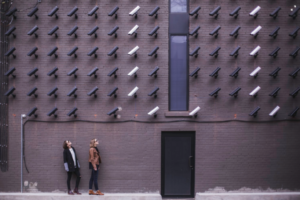
Epigraph Quote:
(The Targeted Individual Program) is “a secret global-level Unconventional War being perpetrated against the human race by the Military-Industrial Complex, central banks, and other dark money private interests; where our intelligence agencies and justice departments have been converted into their Front Organizations; and their fusion centers are being used to identify assets to divert, weaknesses to exploit, and populations to subvert.”
Susan Sorkin, From: “Ramola D: Here’s Why Suzie Dawson is One of Your Biggest Allies; A Few Facts to Set the Record Straight Regarding Our Common Enemy” (2019)
Webmaster Introduction: Susan Sorkin states that the “Five Eyes and the Department of Justice have been hijacked by non-state actors… and the Deep State is an insurgent movement (that conceals the) motive behind the Five Eyes’ secret war versus Targeted Individuals and Organizations.” Now what could that concealed motive be? Insurgency by the “World Revolutionary Movement,” which IS the “Great Reset” and UN Agenda 2030. See: 1) Scope, Structure, & Purpose of Global Gangstalking Electronic Enslavement-Torture-Murder Ops (GGEETMO); 2) Psychological Profile of Perps (Weaponized People) & Destructive Cults, 3) Protocols Now Implemented on this website for an extremely plausible scenario.
Article:
Let me begin by stating that I am a big fan of both Suzie Dawson and Ramola D (everydayconcerned.net) – two activists and journalists who report on the crimes of the Five Eyes spying alliance and other Deep State actors. After reading recent tweets in which Ramola D alleged Suzie Dawson had been “co-opted [by the Deep State]”, I thought I would publish a few facts that identify these ladies as allies against a common enemy. Hopefully they’ve already sorted this out, but if not, the following information may help.
The key information is publicly available (disclosed by Edward Snowden) but has heretofore been largely misunderstood by the public and news media with a few exceptions. In fact, Dawson is one of the foremost experts with regard to these classified documents: one of the reasons she (like Ramola D) is a high-value target of the Five Eyes.
BOTH HAVE REPORTED FALSE RESCUE OPERATIONS

Both Suzie Dawson and Ramola D have been targeted with similar subversion tactics including infiltration, false flag and false rescue operations by Five Eyes and their Front Organizations/ Operatives.
For example, Dawson’s Wikileaks activist group Unity4J organization has been infiltrated by long-term Five Eyes plants. They have published deeply defamatory allegations about Dawson while claiming their interest is to “protect Julian Assange”. In reality, these articles have falsely attributed the Five Eyes’ sabotage of Dawson to her, e.g. running her out of money/ destroying her financial opportunities, then falsely claiming she is using her association with Assange to enrich herself/ seek donations.
In Ramola D’s case, she has reported on the existence of Front Organizations within the Targeted Individual Movement that feign to be support groups, but whose actual intent is to further subvert these victims (e.g. incite them towards violence). If her allegations are accurate, she is describing textbook false rescue operations.
In the recent back and forth between her and Dawson over Twitter, Dawson dismissed Ramola D’s reporting on these alleged infiltrators as mere “in fighting”. This annoyed Ramola D and set the stage for an expanding conflict between these two ladies. In reality, this is a misunderstanding.
To help look at this from another perspective, earlier this year, Suzie Dawson was outraged with Jesselyn Radack (whistleblower activist), after Radack re-published defamatory allegations about Dawson. Dawson’s anger was because she had identified the source of the negative commentary as a Five Eyes’ infiltrator to the Unity4J movement. Well, Ramola D was essentially reporting on the same types of situations, and Dawson, in effect, played the role of Radack by calling it “in fighting”.
I believe this “crossing of the wires”, combined with other factors, led Ramola D to conclude Dawson had been co-opted.
2. EIGHT KEY FIVE EYES’ TACTICS
There are 8 key tactics the Five Eyes employ in their subversion campaigns versus Targeted Individuals that act as major smoking guns: 1) Intimidation, 2) Provocation/ Entrapment, 3) Protraction (long term campaigns), 4) Exhaustion (emotional, financial, physical, spiritual, psychological), 5) use of Counter Warfare, 6) use of Influence Operations (also called ‘Street Theater Skits’), 7) use of Sophisticated Smear/ Slander Campaigns, 8) Forced Isolation of Targeted Individuals.
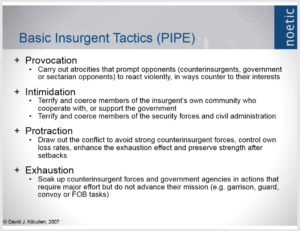
These tactics identify the Five Eyes’ Targeted Individual Program as being an Unconventional Warfare and Counterinsurgency program. Why is this significant? It means the Five Eyes and Department of Justice have been penetrated and hijacked by non-state actors. It means the Deep State is an insurgent movement- not a few corrupt officials, i.e. the concealed motive behind the Five Eyes’ secret war versus Targeted Individuals and Organizations.
For example, the book ‘Licensed to Lie: Exposing Corruption in the Department of Justice’ exposes the use of Counterinsurgency Influence Operations to rig criminal cases and conceal the diversion of assets and power to the Deep State. Similarly, the documentary ‘Dark Money’ exposes the penetration and hijacking of political and judicial positions by the Deep State.
The Five Eyes are executing a global subversion campaign in which Ramola D, Dawson and Assange are some of the millions of individuals targeted for subversion by the Deep State.
3. THE CIA’S PSYCHOLOGICAL OPERATIONS IN GUERRILLA WARFARE
The Five Eyes are executing an updated version of the Unconventional Warfare strategy (called a ‘Mass Oriented Insurgency’*) outlined in a document called the CIA’s Psychological Operations in Guerrilla Warfare training manual. (*See below description of Mass Oriented Insurgency)
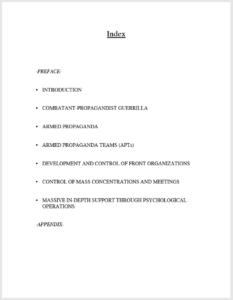
Table of Contents- CIA’s Psychological Operations in Guerrilla Warfare
These crimes are being executed and concealed with an economic adaptation to Unconventional Warfare and Counterinsurgency designed to be impossible to prove or escape. “Gang stalking”, “security service stalking”, “no touch torture” programs and “electronic harassment” are all variations of this form of warfare.
As the Five Eyes’ slide from the Snowden Archive below identifies, this form of warfare includes Information Operations. Information Operations are comprised of 1) Military Deception (MILDEC), 2) Operational Security (OPSEC), 3) Computer Network Operations (CNO), Electronic Warfare (EW) and 5) Psychological Operations (PSYOP).
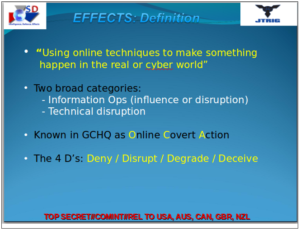
Thus, the reality is that Assange, Dawson and Ramola D are all being targeted by the same Deep State groups with variations of this same form of warfare. A main differentiator is that victims of electronic weapons- like Ramola D- are being subverted with more severe forms of Electronic Warfare. (This supports Ramola D’s assertion that Assange’s case is interconnected to the Five Eyes’ global campaign vs. all Targeted Individuals.)
4. CONCLUSION
The identification of the Targeted Individual Program as a form of Unconventional Warfare and Counterinsurgency is the key that can identify the perpetrators of these crimes. This simple but world changing revelation needs to be reported on.
Since Dawson’s documentary ‘Diary of a Person of Interest’ accurately exposes these crimes, there is no way that she has been willingly or knowingly “co-opted” by the Deep State. Quite the contrary, they are determined to destroy her before she learns the truth. And the same can be said for Ramola D, who has reported on this same global-level Unconventional Warfare campaign in an excellent series called the ‘Global Gestapo’ with Dr. Eric Karlsson.
(Webmaster comment: sic: Dr. Eric Karlstrom is me)
With her platform as a prominent activist, Suzie Dawson is well-positioned to expose these Five Eyes crimes. As such, she is definitely one of Ramola D’s biggest allies.
However, Ramola D has built a loyal audience of her own. And by simply identifying gang stalking as a form of Unconventional Warfare, she would have an avalanche of evidence to prove her major allegations. For example, Ramola D has reported on the existence of Front Organizations in the T.I. Movement that are carrying out “Mass Concentrations and Meetings”: these are textbook operations that come right out of the CIA’s own documents!
Hopefully, if they both take an hour to read the ‘CIA’s Psychological Operations in Guerrilla Warfare’, they’ll realize they’ve both been reporting on different aspects of the same campaign: a secret global-level Unconventional War being perpetrated against the human race by the Military-Industrial Complex, central banks and other dark money private interests; where our intelligence agencies and justice departments have been converted into their Front Organizations; and their fusion centers are being used to identify assets to divert, weaknesses to exploit and populations to subvert.
The world needs Ramola D, Suzie Dawson and the Targeted Individual Movement to identify this Unconventional Warfare campaign for what it is. Therein lies the keys to salvation for us all.
* APPENDIX D
The Mass-oriented Insurgency: How it Organizes, How to Counter it
APPENDIX D The Mass-oriented Insurgency: How it Organizes, How to Counter it
This appendix describes the mass-oriented insurgency, the most sophisticated insurgency in terms of organization and methods of operation. It is difficult to organize, but once under way, it has a high probability of success and is the type of insurgency most likely to require external assistance to defeat. Consequently, it is the form of insurgency US forces may most often encounter.
This type of insurgency originated in China under Mao Tse-Tung. Mass-oriented insurgency relies on the mobilization of very large numbers of people into an alternative government with many highly specialized political and military agencies. It bases its mobilization on a clear identification of social dysfunctions and an appealing program for fundamental political change. The element of popular participation is such that the method can be consistent with US values and objectives. Thus, the United States may support or oppose mass-oriented insurgency. It is not always against such a movement.
Mass-oriented insurgency combines political and military resources to attack and destroy the existing government. Therefore, organized military action will probably be a necessary part of a program to counter it. US armed forces must understand mass-oriented insurgency’s organizational and operational methods, if they are to oppose it successfully.
STRUCTURE
The structure of mass-oriented insurgency generally includes the following elements:
A control element to perform centralized policy-making and supervisory functions. The control element is normally compartmentalized to provide security against penetration by intelligence agencies.
Mass civil organizations that connect people with the leadership. Through these, the leadership can effect control and receive popular support.
Overt or covert armed elements or both.
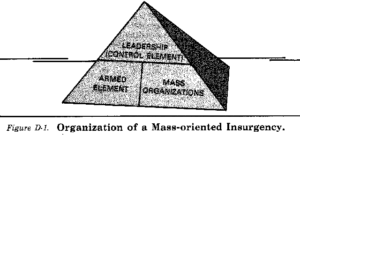
Figure D-1 Organization of a Mass-oriented Insurgency.
The heart of every mass-oriented insurgency is a disciplined political element that directs both military forces and mass organizations. In the Maoist tradition, the political element is the central committee of the Communist party. (Figure D-1 depicts the organization of a mass-oriented insurgency in simplified form.)
PHASES
The evolution of any phase in a mass-oriented insurgency may extend over a long period of time. A successful insurgency may take decades to start, mature, and finally succeed.
The classical phases of a mass-oriented insurgency are–
Latent and incipient (phase I).
Guerrilla warfare (phase II).
War of movement (phase III).
An insurgency may not require all phases for success, nor are these phases separate and distinct from each other. Regardless of the number or the duration of the actual phases the insurgency undergoes, its leadership necessarily will initiate some type of final consolidation activities. These may include removing potential enemies or establishing additional control mechanisms. At a minimum, they will probably include educating the society about its new government. (Figure D-2 presents typical activities that may occur in each phase of a successful insurgency.)

Figure D-2. Typical Activities Within Phase of Insurgency
Latent and Incipient Phase
This phase ranges from circumstances in which insurgent activity is only a potential threat (latent or incipient) to incidents and activities which occur frequently and in an organized pattern. This phase involves no major outbreak of violence or uncontrolled insurgent activity.
Starting from a relatively weak position, the insurgents plan and organize their campaign and select initial urban or rural target areas. They make basic decisions regarding ideology and determine fundamental leadership relationships. They also establish overt and covert organizations. If the insurgents’ movement is illegal, the organizations they create are normally covert; if their movement is legal, they may establish overt Organizations. A covert control element should exist in either case. Throughout this period, the insurgents use PSYOP to–
Exploit grievances.
Influence the populace.
Heighten expectations.
Promote the loyalty of insurgent members.
As the insurgents consolidate their initial plans, their organization coalesces into a shadow government. After this, they concentrate on–
Gaining influence over the populace.
Infiltrating government, economic, and social organizations.
Challenging the government’s administrative ability.
Recruiting, organizing, and training armed elements.
Various elements may attack government forces. They may also carry out intimidation activities and some minor military operations. These tactics gain additional influence over the populace, provide arms for the movement, and damage the government’s public image by demonstrating its inability to provide adequate security. In this first phase, the groundwork is laid for broad external support needed to expand the insurgency.
Guerrilla Warfare Phase
The movement reaches the guerrilla warfare phase when it gains sufficient local external support to begin organized guerrilla warfare or related forms of violence against the government. Activities begun in Phase I continue and expand. Insurgent control, both political and military, over territory and the populace intensifies.
The insurgents form a government of their own in insurgent-dominated areas as the military situation permits. In areas not yet controlled, insurgent forces make efforts to neutralize actual or potential opposition groups and to increase infiltration into existing government agencies. Intimidation through induced fear and threat of guerrilla action increases.
The insurgents’ major military goal is to control additional areas; the government must then strain its resources to protect many areas at the same time. Insurgent forces attempt to tie down government troops in static defense tasks, interdict and destroy LOC, and capture or destroy supplies and other government resources.
War of Movement Phase
Mass-oriented insurgency moves from phase II to phase III when it becomes primarily a conventional conflict between the organized forces of the insurgents and those of the established government. However, some insurgencies may be successful even before they reach this stage.
Activities conducted in Phases I and II continue and expand. Larger units fight government forces, attempting to capture key geographical and political objectives in order to defeat the enemy.
THE MAOIST EXAMPLE: THE PARTY
The Maoist and Marxist party organization illustrates how to achieve effective centralized direction of a mass-oriented insurgency. Analysis of this organization provides a basis for understanding mass-oriented insurgency.
The party focuses on eventual control over all three main elements of the organization: the core element, mass organizations, and armed elements. It begins with control of “liberation” committees that parallel the country’s existing government at the local, subnational, and national levels. These committees interlock organizationally to ensure parly control over their activities. The interrelationships of these elements may vary from one insurgency to another, but this interlocking arrangement, with its high degree of centralized control, usually emerges. (Figure D-3 illustrates the numerous elements of a party infrastructure.)
The Party Core
The cell is the basis of the mass-oriented insurgent party structure. A party member usually belongs to two or more cells-the local party cell and one or more functional cells such as those in schools, in factories, or in trade organizations. Parallel chains of command exist between the party structure and the various functional organizations. Party cells and functional cells often overlap.
Party groups normally control and coordinate the activities of two or more party cells. Each party group, in turn, is responsible to a higher office, the interparty committee. This committee is responsible to its counterpart committee at the next higher political echelon. The chain of command within the overall party structure extends downward from the central committee at the national level through each interparty committee at the national, subnational, and local levels.
Although all authority stems from the cellular party organization, functional committees carry out the party’s day-to-day activities. The primary organization for this purpose is the party executive committee, often called the party revolutionary committee. Such committees normally exist at national, subnational, and local levels. Functional cells perform their tasks under the direction of local committees. The secretariat of the central committee exercises control at the national level.
At each political level, the membership of the party core cellular organization intertwines with its counterpart revolutionary committee. All members of the revolutionary committee concurrently are party members and members of a party organization cell.
A youth organization is another structure which parallels the party as an indispensable affiliate. Its members engage in many insurgency activities and acquire experience in party work. This experience prepares them to enter the core of the organizational apparatus when they are eligible.
Mass Civil Organizations (Front Groups)
Front groups are mass civil organizations and are the primary means used by the insurgents to achieve control and influence over the populace. The insurgents use these– groups for intelligence, logistics, and recruiting requirements. Some of the individuals recruited may initially be unaware of the organization’s true role.
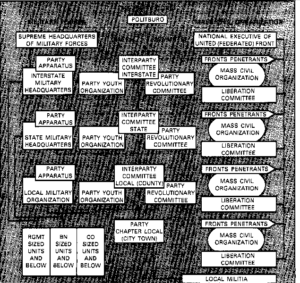
Figure D-3. Party Infrastructure
There are three types of front groups: popular organizations, special interest groups, and local militia. Popular organizations are the most important of the mass civil organizations because they are large and organized on a countrywide scale. They have committees at the national, subnational, and local levels. Special interest groups focus on particular issues. They have a smaller range of interests than popular organizations. The local militia bridges two categories. It is a mass civil organization but is also somewhat military in nature. Its functions are listed in the next section.
Armed Elements
The local militia isolates the populace from government control. It is not normally in the military chain of command. It has three distinct paramilitary elements: the local guerrilla or self-defense force; the combat guerrilla unit; and the secret guerrilla unit.
The local guerrilla or self-defense force organizes, trains, and deploys to defend communities and to secure base areas. It is the local instrument for inflicting damage on the government and for gaining and maintaining population control. The combat guerrilla unit supports insurgent military forces. It also conducts independent small operations. The secret guerrilla unit enforces the will of the party in a given area. The great majority of its personnel are party members.
Insurgent military forces often fall into two classes: main forces and regional forces. The main force is a body of well-trained soldiers forming a highly motivated, elite fighting group. The main force is under national-level control and is deployable where needed. Personnel recruited directly from the mass civil organizations or promoted from the ranks of the local militia normally compose the regional force. This force generally confines its operations to its specific region, state, or province.
The military forces are only one of several instruments through which the party seeks to achieve power. Mass-oriented insurgency anticipates military reversals and the possible need to retrench, restructure, or temporarily disband should the opposing government’s strength prove overwhelming. Party strategy assumes that as long as the party core and the mass civil organizations remain intact, the military forces can reactivate or rebuild. Without the party nucleus and mass civil organizations base, however, the movement cannot succeed.
COUNTERING THE MASS-ORIENTED INSURGENCY
A government may achieve significant success in countering an insurgency in any of its phases if it designs its strategy for a twofold mission: to prevent insurgent activities from escalating and, ultimately, to eliminate the insurgent threat. The ideal response is flexible and the government adjusts it to the intensity of insurgent activities and conditions within the country. The government tailors its activities to fit a situation. It monitors operations and continues only those that contribute to success.
The government should begin new programs to prevent the insurgency from recurring and continue ongoing programs that help improve conditions. The following is a brief outline for an integrated, government-wide response to a mass-oriented insurgency.
Phase I
Certain counterinsurgency activities are particularly important during the latent and incipient phase. They are-
Government-wide developmental actions to improve political, economic, or social conditions.
Measures to strengthen the psychological and organizational links between government and populace.
Measures to control the insurgents’ access to the populace and resources.
Military civic action. (See JCS Pub 1-02 definition.)
Action to improve police performance, intelligence, and counterintelligence operations.
Psychological operations.
Action to upgrade security forces.
Action to train military forces.
Phase II
The guerrilla warfare phase begins when the insurgent employs full-time organized forces in combat. It normally requires changes in emphasis in activities begun earlier and the introduction of other measures. These include–
Strengthening territorial security forces.
Increasing PRC measures and PSYOP to isolate the insurgents physically and psychologically from the populace.
Conducting tactical operations to seek out and defeat insurgent armed elements.
Phase III
Should the government fail to contain insurgency in earlier phases, it faces the danger of military defeat in the war of movement phase. The government must begin more comprehensive internal defense activities and administer them more strictly as it attempts to consolidate its support and defeat the insurgent forces. In phase III, combat may approach the levels of conventional warfare and will probably take priority over all other activities.
05-24-1996; 11:33:17
